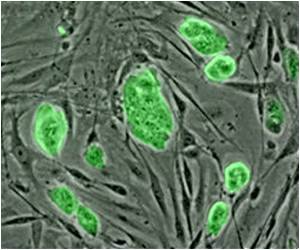A second gene that can increase a man's risk of familial, or inherited, testicular germ-cell cancer has been identified by scientists at the National Institutes of Health.
A second gene that can increase a man's risk of familial, or inherited, testicular germ-cell cancer has been identified by scientists at the National Institutes of Health.
Men with a family member who had a testicular germ cell cancer are at three-to six-fold greater risk than other men of developing testicular cancer.Although a family history of testicular cancer probably accounts for less than five percent of all testicular cancers, the careful study of rare familial cancer clusters has often led to important new understanding of the non-familial versions of the same cancer.
"This study contributes to our understanding of why testicular germ cell cancer appears to run in families," said Dr Raynard Kington, Acting NIH Director.
"The findings may also lead to new ways to identify men at high risk, as well as more effective ways to prevent and treat testicular germ cell cancer," Kington added.
According to researchers, the key pathway in this disease is the cyclic AMP pathway, which regulates how cells respond to such signals as hormones.
Drugs that affect the cyclic AMP pathway are widely available, and, in theory, could affect progression of testicular cancer.
Advertisement
"The mutations don't cause cancer directly, but instead appear to increase an individual's susceptibility to developing a tumour," said the study's senior author, Dr Constantine Stratakis, D.Sc., chief of NICHD's Section on Endocrinology and Genetics.
Stratakis and his colleagues analyzed the portion of the DNA from 95 familial testicular cancer patients that contains the PDE11A gene.
They found seven mutations in the cancer patients, and noted that the rate at which they were detected was much higher than that seen in the DNA of people without testicular cancer.
Stratakis said that learning how disruptions in the PDE11A enzyme lead to an increased risk of tumor formation may help researchers identify other proteins that also play a role.
The study appears in the Cancer Research.
Source-ANI
RAS











